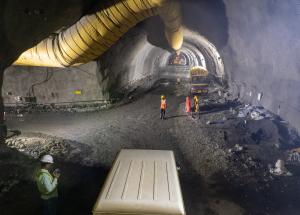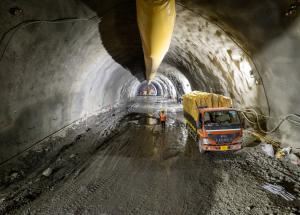The 21 km long India’s first underground/undersea tunnel is under construction between Mumbai bullet train underground station at Bandra-Kurla Complex and Shilphata in the State of Maharashtra. Out of 21 km of tunnelling works, 16 km is through Tunnel Boring Machines and remaining 5 km is through NATM. This also includes 7 km of undersea tunnel at Thane creek.
Construction and excavation work is progressing well at following locations:
- Shaft 1 at Mumbai HSR station construction site: Shaft depth of 36 meters, 100% secant piling work completed, excavation work is currently underway.
- Shaft 2 in Vikhroli : Shaft depth of 56 meters, 100% secant piling work completed. As on date approx. 92% excavation for the shaft is completed.
- Shaft 3 in Sawli (near Ghansoli): Shaft depth of 39 meters, 100% excavation work has been completed. This shaft will facilitate first tunnel boring machine expected to be lowered by end of this year.
- Shilphata: This is the NATM end of the tunnel. Portal work is already completed and 200-meter excavation has been achieved so far.
- ADIT (Additionally Driven Intermediate Tunnel) Portal: A 394-meter-long ADIT tunnel is already completed in a record time to 6 months. This has facilitated two additional NATM faces for the excavation work in addition to Shilphata. Due to this additional access, more than 700 meters of tunneling work has been achieved so far.
The ADIT of internal dimension: 11 meter X 6.4 meter will give direct vehicular access to the main tunnel during construction and operations and may also be used for the purpose of evacuation process in emergency situation.
Various types of Geotechnical Instruments like Inclinometers, Vibration monitors, Ground settlement markers, Tilt meter etc. have been installed at and around construction sites for monitoring tilt, settlement, vibration, cracks and deformation. These instruments play a crucial role in making sure that neither there is any risk to ongoing underground works like excavation and tunneling nor to the structures surrounding the site.






